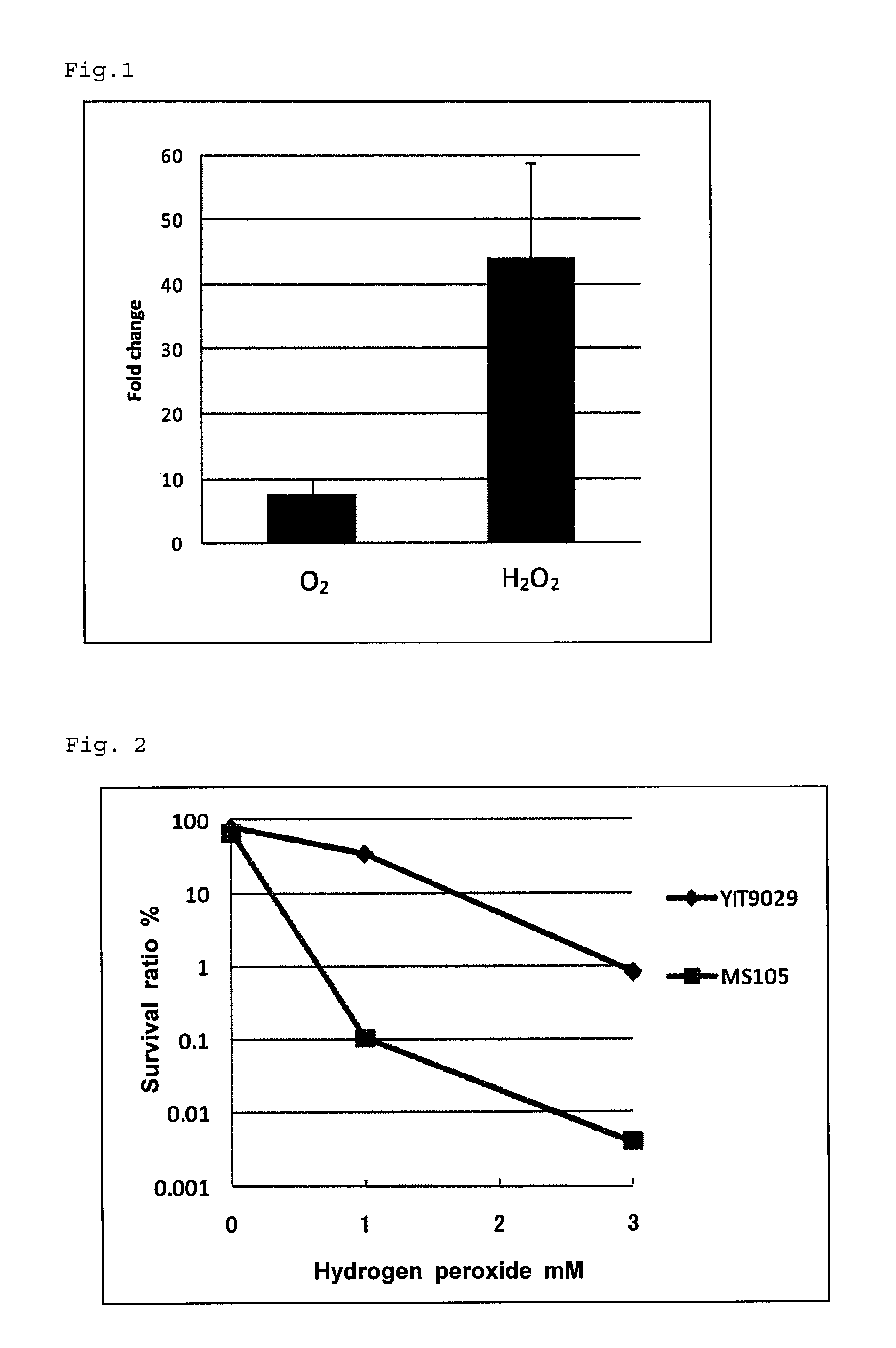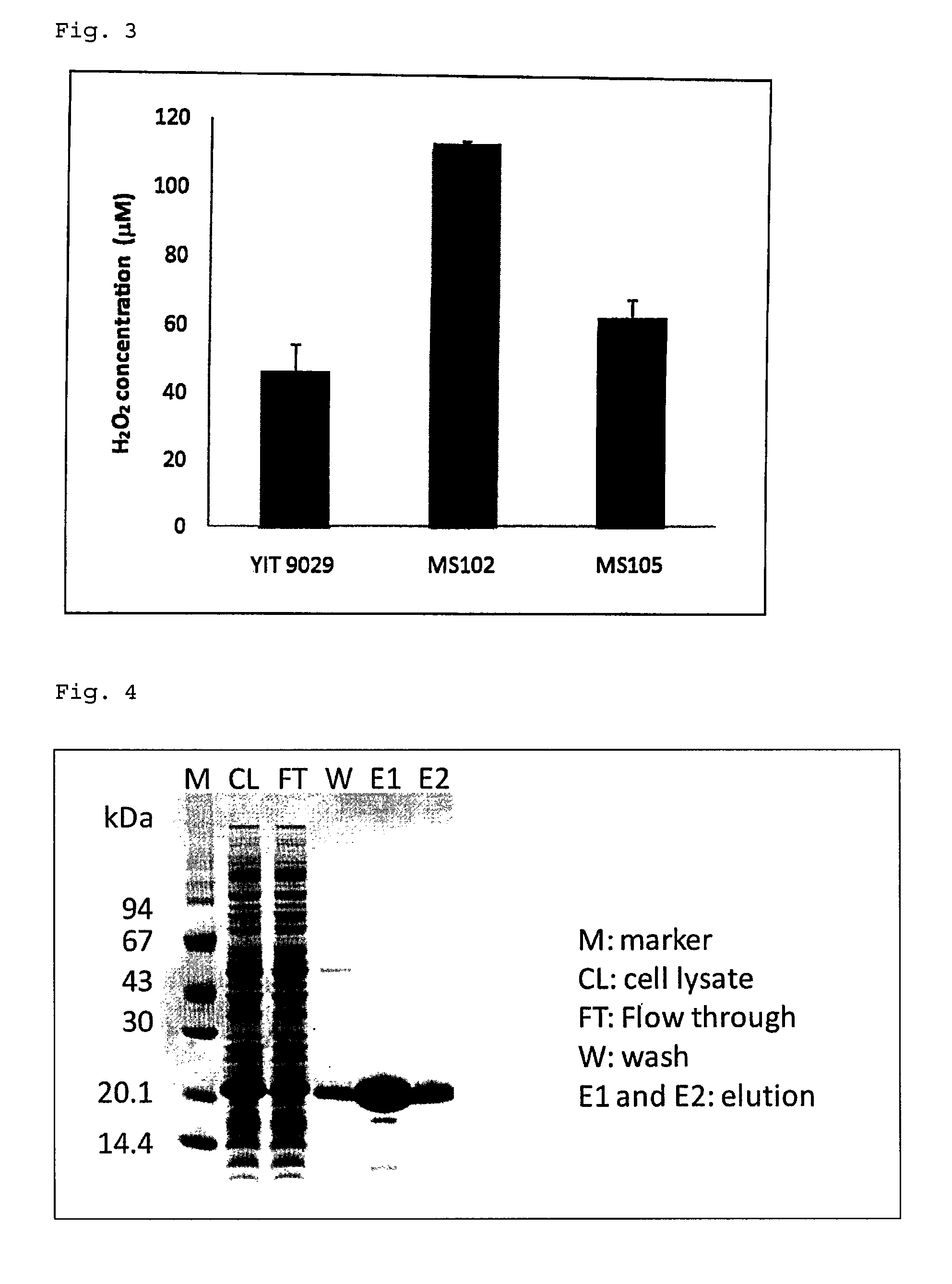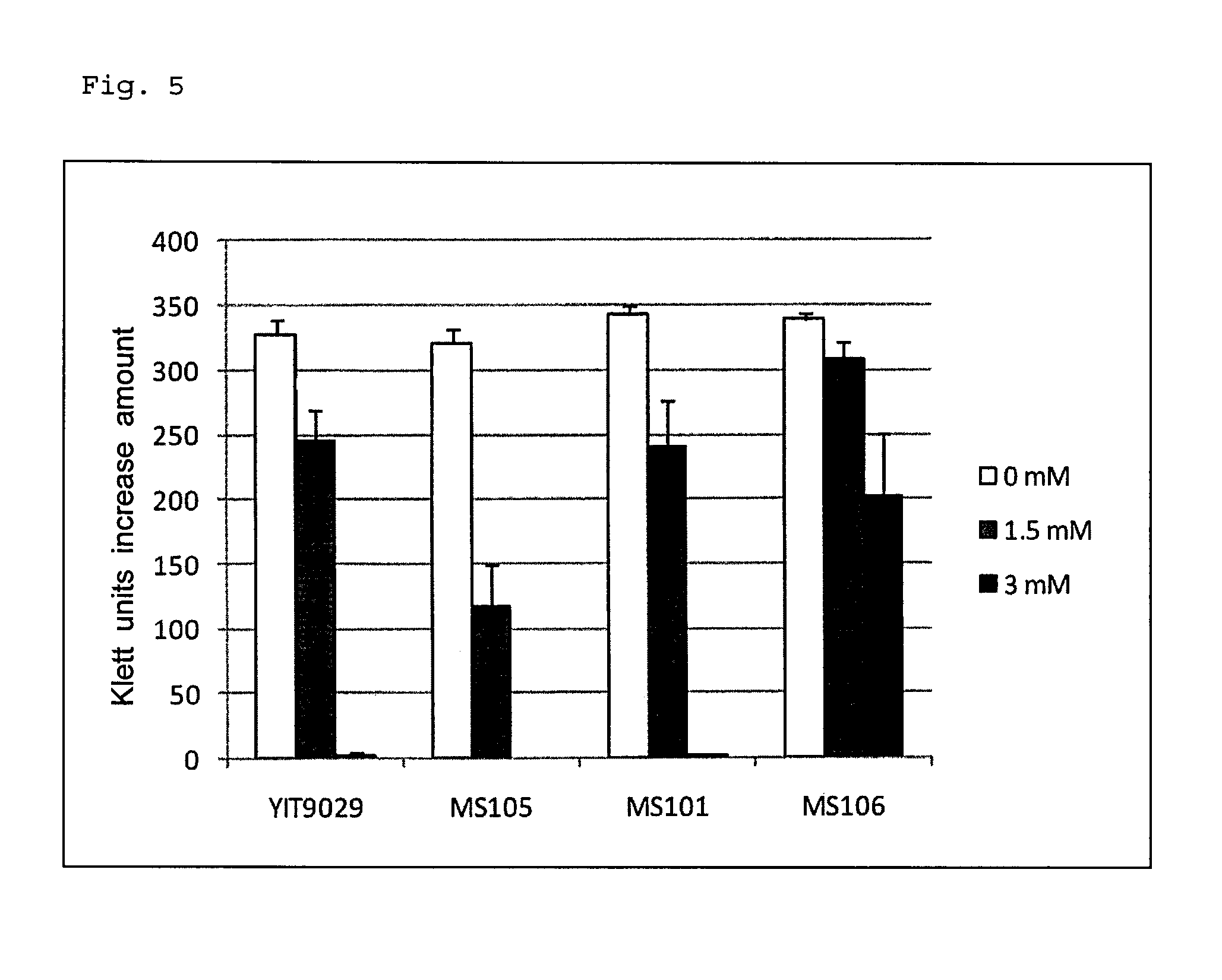Hydrogen peroxide resistance-imparting gene and method for using same
a technology of hydrogen peroxide and imparting gene, which is applied in the direction of antinoxious agents, drug compositions, peptides, etc., can solve the problems of difficulty in practicability use, the mechanism of oxygen resistance has not yet been fully elucidated, and the relationship between growth inhibition of bacterium and oxygen resistance thereof has not been fully elucidated. , to achieve the effect of enhancing the hydrogen peroxide resistance of a microorganism, enhancing the hydrogen peroxide resistan
- Summary
- Abstract
- Description
- Claims
- Application Information
AI Technical Summary
Benefits of technology
Problems solved by technology
Method used
Image
Examples
example 1
Change in Expression Level of CDS2657 Gene Caused by Oxygen or Hydrogen Peroxide Stress
[0095]The expression level of CDS2657 gene when exposed to oxygen or hydrogen peroxide was analyzed by using real time PCR.
[0096](1) Addition of Oxidative Stress
[0097]For oxygen stress, culture was performed for seven hours in 100 ml anaerobic MRS medium. After the resultant culture liquid was divided into two groups, one was added to a 300 ml volume conical flask and the oxygen stress was applied by shaking for 30 minutes at 160 rpm using a shaking incubator manufactured by TAITEC Co., Ltd. For hydrogen peroxide stress, culture was performed for seven hours in 100 ml MRS medium in aerobic and static conditions. After the resultant culture liquid was divided into two groups, one was added with hydrogen peroxide at a concentration of 0.5 mM and the hydrogen peroxide stress was applied by additional culture for 30 minutes.
[0098](2) RNA Preparation
[0099]The culture liquid cultured in an MRS medium (2...
example 2
Isolation of CDS2657 Gene-Disrupted Strain
[0107](1) Method for Gene Disruption
[0108]Employed were, as primers, an oligonucleotide 5′-cgcggatccggttcttgtgccattggaaa-3′ (SEQ ID NO: 7), which had been designed by adding a sequence including a BamH I restriction site to the 5′-end of a sequence within the sequence of SEQ ID NO: 1, and an oligonucleotide 5′-aaactgcagtgtcatcacgcagagccaac-3′ (SEQ ID NO: 8), which had been designed by adding a sequence including a Pst I restriction site to the 5′-end of a sequence selected from the sequence complementary to the sequence of SEQ ID NO: 1. By use of KOD Plus DNA polymerase (manufactured by TOYOBO, product code: KOD-201) and according to an instruction attached to the enzyme, PCR was carried out with DNA of Lactobacillus casei YIT 9029 as a template. The thus-amplified DNA fragment was a partial sequence of the CDS2657 gene lacking both the amino terminus and the carboxyl terminus. This product was mixed with an equiamount of Tris-EDTA (10 mM Tr...
example 3
Hydrogen Peroxide Resistance of CDS2657 Gene-Disrupted Strain
[0116](1) Lactobacillus casei MS105 strain obtained from Example 2 was cultured overnight in an MRS medium. After that, the cells were collected, washed twice with 50 mM potassium phosphate buffer (pH 6.8), and suspended in the same buffer so that the cells were 10-fold diluted. The suspension (3 ml) was poured in a small test tube with aluminum cap and added with hydrogen peroxide at a final concentration of 1 or 3 mM. After incubation for three hours at 37° C., cell number was counted so that the survival ratio compared to the cell number before hydrogen peroxide addition was obtained.
[0117](2) Result
[0118]Lactobacillus casei MS105 strain exhibited the survival ratio which was lower by about two orders of magnitude than the wild type, exhibiting higher sensitivity to hydrogen peroxide (FIG. 2).
PUM
| Property | Measurement | Unit |
|---|---|---|
| pH | aaaaa | aaaaa |
| pH | aaaaa | aaaaa |
| total volume | aaaaa | aaaaa |
Abstract
Description
Claims
Application Information
 Login to View More
Login to View More - R&D
- Intellectual Property
- Life Sciences
- Materials
- Tech Scout
- Unparalleled Data Quality
- Higher Quality Content
- 60% Fewer Hallucinations
Browse by: Latest US Patents, China's latest patents, Technical Efficacy Thesaurus, Application Domain, Technology Topic, Popular Technical Reports.
© 2025 PatSnap. All rights reserved.Legal|Privacy policy|Modern Slavery Act Transparency Statement|Sitemap|About US| Contact US: help@patsnap.com



